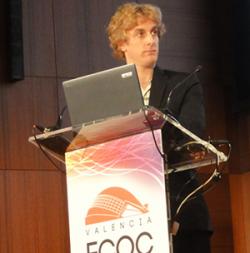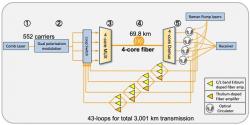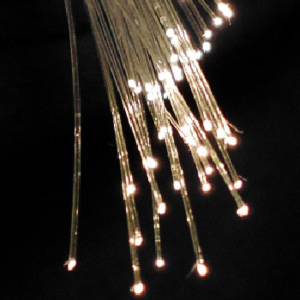The team of the National Institute of Information and Communications Technology (NICT) of Japan upgraded existing fiber optic technologies and achieved a dizzying data transfer speed of over 3,000 kilometers. In addition, their approach is compatible with existing infrastructure.
–
Optical fibers. Credit: BigRiz / Wikimedi Commons.
–
Japanese experts have had significant success with new data transfer technology. They vigorously erased the previous record when they reached a data transfer rate of 319 terabits per second (Tb / s) in an optical cable over 3,000 kilometers long. The previous record was “only” 178 Tb / s. The technology used is compatible with the existing infrastructure, so it should be possible to switch to such a transmission relatively easily.

Benjamin Puttnam (2015). Kredit: NICT.
–
The successful team was led by Benjamin Puttnam of the National Institute of Information and Communications Technology (NICT) in Japan. They followed up on the previous output of 172 Tb / s, in which NICT experts also took part last year. They used a technology called wavelength-division multiplexing, in which data is transmitted by a laser that divides the signal into 552 channels and sends it through four optical fiber cores.
After 70 kilometers, amplifiers were placed on the optical cable to ensure that the signal was not lost during long-distance transmission. It was a new type of amplifiers, in the construction of which the researchers used the rare earth elements thulium (Tm) and erbium (Er).

Schematic of the system with which the NICT team set a new record. Credit: NICT.
–
Using four optical fiber cores, a cable with the same diameter as a standard single-core optical cable was created. This is very interesting for the possible practical use of such technology for remote data transmission. Thanks to the same diameter, it is compatible with the existing fiber optic infrastructure. According to Puttnam’s team, four-core optical cables should also have comparable mechanical properties and reliability.
The record is respectable, but it probably won’t last long. Puttnam and colleagues plan to continue their efforts and will continue to develop a system for ultra-fast long-distance data transmission. They want to further increase the capacity of data transmission and the distance to which they transmit data.
Literature
– .


